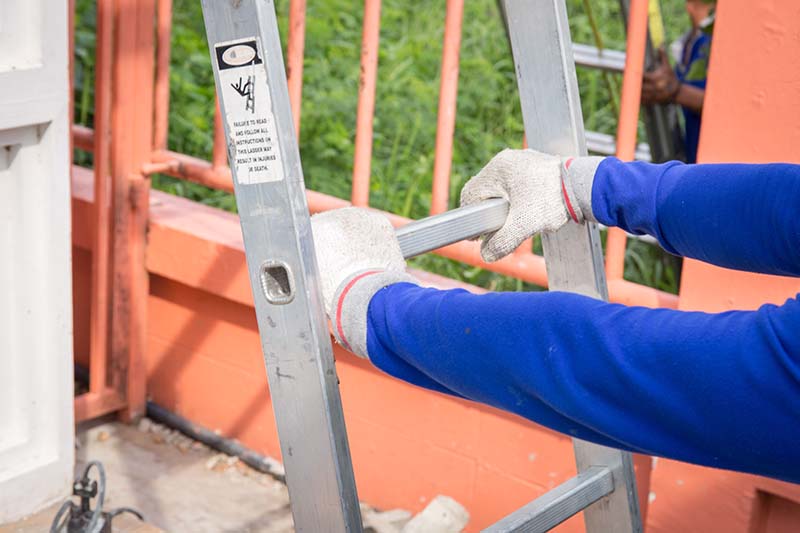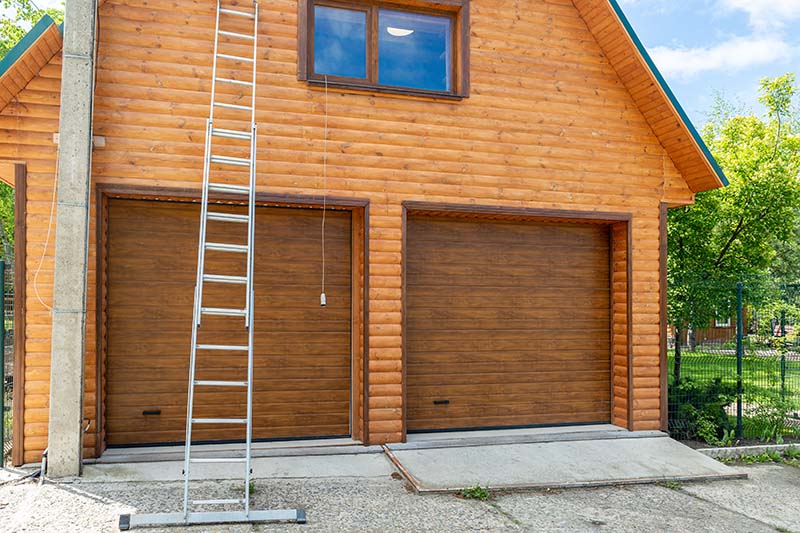How Far Apart Are Ladder Rungs? Standards, Material, Shape & More
-
Pete Ortiz
- Last updated:

A ladder is a basic tool designed to help people ascend or descend from point A to B. All the different types of ladders have two or more vertical supports, which are commonly known as the side rails or stiles. They also have several horizontal steps that we like to call rungs.
Your feet and hand(s) are supposed to be on the rungs while climbing or coming down from a higher elevation. A conventional ladder will have an average rung spacing of 12 inches and a rung width that’s 16 inches long¹. That 12-inch distance between the rung has to be maintained throughout its length, mostly for safety reasons.
In today’s post, we’ll be digging into the rung spacing, shape, rigidity, and everything else there is to know about ladders.
Why Are Rung Spacing Standards Important?
According to data collected by the U.S. Bureau Of Labor Statistics, we record more than 20,000 ladder-related injuries every year.¹ Most of them are caused by human error, and that’s why the relevant governing bodies had to step in to do something.
They created standards that would help reduce those incidences by ensuring manufacturers don’t produce ladders with questionable structural integrity. The United States regulatory government agency that’s responsible for setting such standards is called the Occupational Safety and Health Administration (OSHA).2
They’ve always maintained that all ladders should have rungs that are spaced 12 inches apart, but they are willing to look the other way if the spacing is 10–14 inches—not less than 10 or more than 14. And that distance must be universal, throughout the ladder.
Australians and New Zealanders use a 10–12-inch range. Canadians are also working with something similar, but that of the UK is a little bit stricter—nobody is allowed to sell, market, or use any ladder that has a rung spacing that’s less than 9 inches or more than 10 inches.

Are Ladder Rungs Made of The Same Material?
You’re probably assuming that all ladders have the same type of rungs because, in your mind, you’ve imprinted an image of the standard ladder. In reality, not all ladders are made of metal or share similar designs.
Ladders are normally constructed using one of three basic materials: aluminum, fiberglass (fiber-reinforced plastic), or wood. And the rungs can be made of the same material as the side rails or a different one. Also, take note of the fact that multipurpose ladders have rungs mostly made of fiberglass, and the design is different from the one that comes with your typical ladder.
Rungs made of fiberglass are the best, as they are not only stronger than aluminum and wood but also durable. The only reason why fiberglass is less desirable to climbers—especially those working on construction sites—is because the material is relatively heavier and not cost-effective.
Are All Ladder Rungs the Same Shape?
Not all ladder rungs are cylindrical in shape. You can easily find iterations that have d-shaped rungs, and those that come in flats. Round rungs are the most common type, as they are usually found in most wooden and metal ladders.
Unfortunately, if your shoes don’t have the appropriate grip, standing still on a cylindrical-shaped rung might feel like a herculean task. That’s why you’ll find some of them covered using a sandpaper-like finish or some slip-proof material that’s effective at preventing slip-and-fall accidents.
Are All Ladder Rungs Rigid?
Rung rigidity has never been a factor taken into consideration while manufacturing ladders. Rigid or not, a well-designed ladder will still be effective at getting the job done. If rigidity was an issue, we wouldn’t have rope ladders. Using that type of ladder will for sure require a higher level of dexterity, but once you get the hang of it, you’ll be able to ascend or descend without breaking a sweat.

What Should Your Ladder’s Stand-Off Clearance Be?
As per the OSHA regulations, it has to be at least 7 inches. The stand-off clearance is the clear distance between the building and the rung’s centerline. If there’s an object between those two points, the stand-off clearance should be measured from the object and not the building. This distance is meant to protect the climber from anything that could make them trip while they are ascending or descending.
Conclusion
The ladder’s rung spacing is a crucial metric in determining how safe a ladder is. It can’t be too wide or too narrow because a climber could easily miss a step, or not be able to get to one while ascending or descending. Make sure your ladder is up to par with the OSHA standards before using it.
See also:
Featured Image Credit: Natalivideo, Shutterstock
Contents


